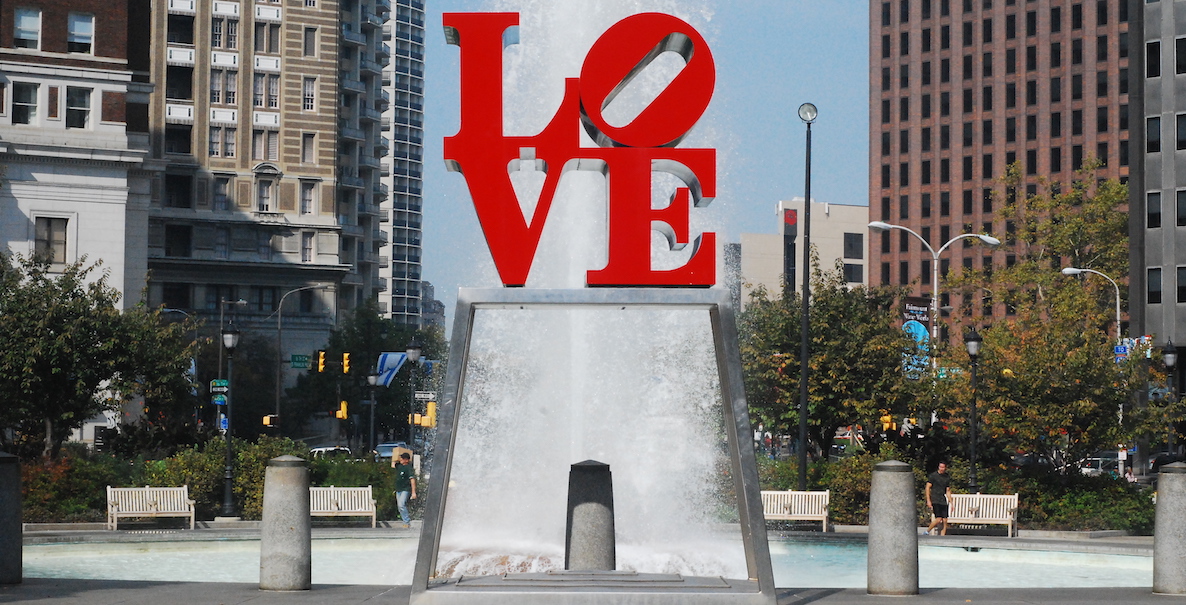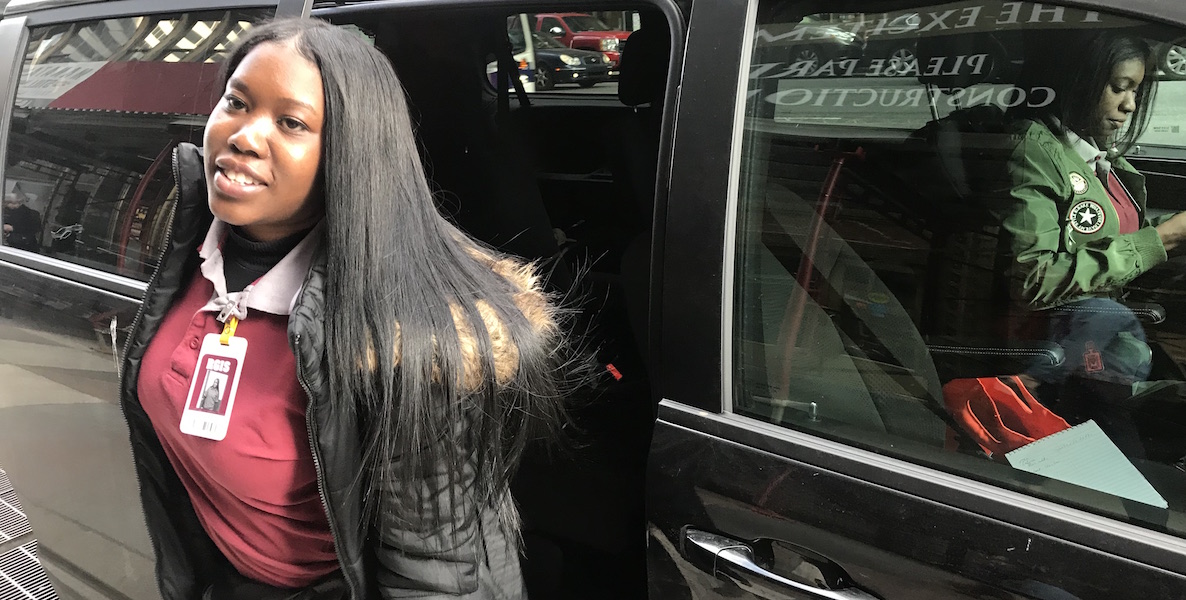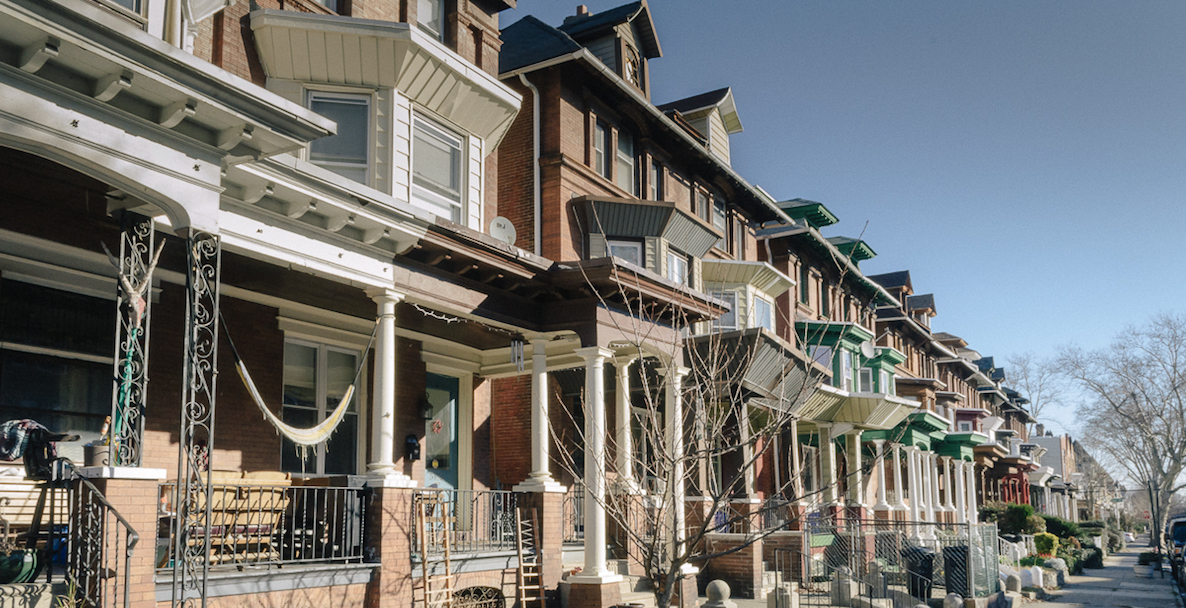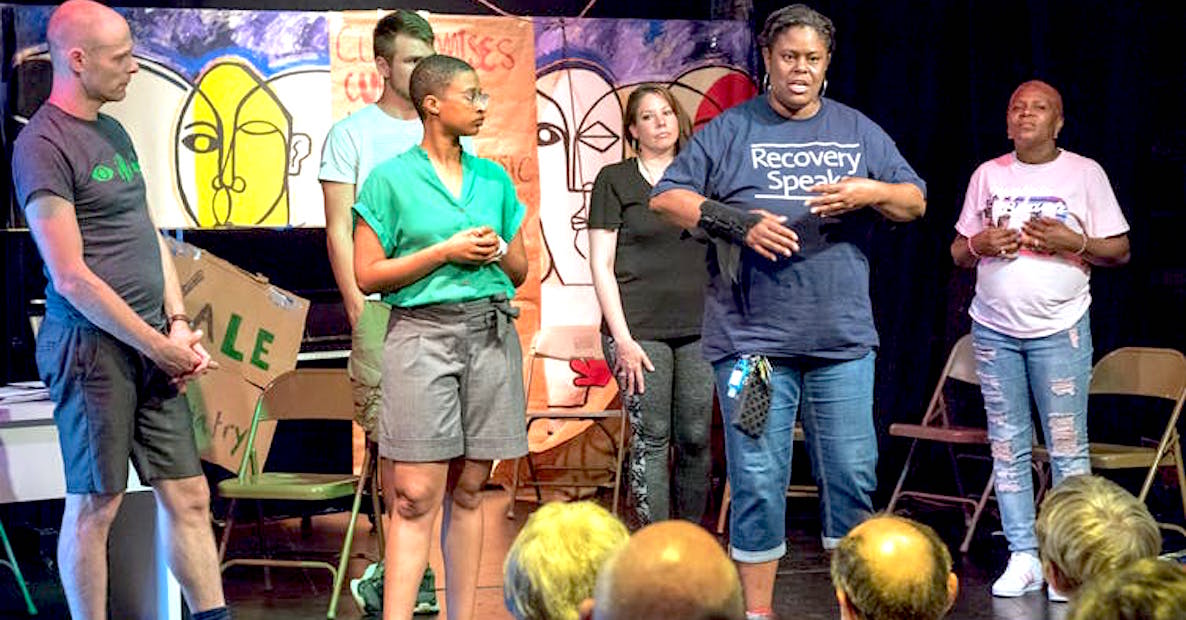When Albert Rivera first started attending classes twice a week with the Citizens–Community Enhancement Project in New Haven, Connecticut last December, he was doing it for the $10 they offered participants. He was abusing cocaine and heroin and living in a hospital as part of an in-patient treatment program, and he needed the money.
But over the course of the next six months, something changed. With the help of his 15 or so classmates and two mentors, he realized that others experienced the same lack of connection to society that he felt; got advice about his day to day challenges; and learned to speak more articulately so he could advocate for himself and his community.
Today, Albert is clean, and though he graduated from the Project last month so is no longer paid for his attendance and expertise, he still stops by the Citizens Project every week; now he attends for the company and the support, rather than for the ten dollar bill. Now he is, as he puts it, “a part of something else bigger than myself”—and that made all the difference.
The Citizens Project was launched nearly two decades ago by a team of researchers in Yale University’s psychiatry department who worked closely with the city’s homeless population. While placing those who had been living without a roof over their heads into secure homes, the team noticed a disturbing trend: that roof, and the societal responsibility and norms that came with it, made many of people they were looking to serve uncomfortable.
“Lo and behold people would say to us, ‘You know, I’m going to go live on the street again,’” says Michael Rowe, one of the initial designers of the project and Co-Director of Yale’s Program for Recovery and Community Health. “We had to think about identity and resources and the things we could offer people. We were not equipped to help people become neighbors and community members and citizens, so we had to work outside of the system of care.”
The Citizens Project, then, started as a research study attempting to uncover the anxieties that led people who had been struggling with housing stability to reject a safe, comfortable home. Rowe and his team found that the people they were working with felt disconnected from any kind of community; they were uncertain about both the societal and political norms that governed everyday interactions.
“Philadelphia is a city with a shocking number of people who have been incarcerated or are under some form of court supervisions,” says McKee. “Giving people empowerment and that sense of community and connection and personal bonds is what’s really going to propel someone to invest in this future, in this kind of life.”
The researchers realized they could teach these norms and skills, and hopefully reduce the barriers to true citizenship that seem so simple to many but so impossible to overcome for Rowe’s clients. That became what the project is today: a twice-per week, two-hour long class where attendees mentor each other and learn from the project’s leaders about the five Rs of citizenship: relationships, responsibility, resources, rights, and roles.
The goal is simple: Provide the participants with a sense of belonging in their community and their government, and show them how to advocate for themselves in everyday relationships and in the broader political spectrum.
A formal study of the program in 2013 found that its impact is significant. Drug and alcohol use dropped among participants by 55 percent, while members of the control group, who received traditional forms of intervention, dropped substance use by only 20 percent. Quality of life indicators among participants in the Project also increased substantially, including satisfaction with daily activities and with jobs. Criminal charges decreased among all participants in the study.
Perhaps most noticeably, homelessness in New Haven decreased by 24 percent between 2014 and 2017; though this has not been formally tied to the work of the Citizens Project, the timing indicates that Rowe and his colleagues are impacting the city’s success. As a result, it has been or is in the process of being replicated as near by as Pennsylvania’s state prisons—led by peer support group Peerstar—and as far away as Scotland, Brazil, and New Zealand.
![]()
The program, which hosts between 12 and 18 students at a time and is funded by the Connecticut Department of Mental Health and Addiction Services, specifically serves individuals currently participating in mental health treatment services who have interacted with the criminal justice system in some way in the past two years. Though it is not a requirement to participate, some students have struggled with homelessness.
For the first hour of each class, students engage in an activity called “What’s Up?,” in which they mentor each other. They share stories of disconnect, counsel each other about how to appropriately handle tense relationships or situations, and share information about resources related to housing and employment. Students are explicitly taught how to listen and how to offer someone else constructive criticism, and everyone is required to speak.
For the second half of each class, Project Directors Patricia Benedict and Josephine Buchanan lead a session on one of the five Rs. Students learn about housing and how to establish a positive relationship with their landlord, or discuss anger management or communication skills as part of the relationship segment of the class. They learn about the legislative process and voting to address their rights and responsibilities.
Before graduating from the program, students complete an entirely self-directed value project, in which they somehow share what they have learned with the community. They can share what they’ve learned about their own talents and skills—one student read a poem he had written in a public space for the first time—or the knowledge they’ve acquired about the community and how it works—one group collected food for a local food bank.
“Our process is to help them to get connected to their community but in order to do that they have to feel some value in themselves,” explains Benedict, whose own background as a Native American pushed her toward working with those who struggle with alienation. “We talk about the entire person. All of our students are in treatment for mental health. All of our students have been involved in the criminal justice system. Some are homeless. Many have addiction problems. What we work with people is to show them that that doesn’t identify you; that isn’t your identity. You are a person first. You are a human being.”
Drug and alcohol use dropped among participants by 55 percent, while members of the control group, who received traditional forms of intervention, dropped substance use by only 20 percent. Meanwhile, homelessness in New Haven decreased by 24 percent between 2014 and 2017.
Rivera took what he learned at the Citizens Project and immediately put it into action. He is an active member of Witnesses to Hunger, a project started in Philadelphia that uses the firsthand knowledge of parents attempting to feed children on limited incomes to push for change in laws affecting them. Just this month, he met with Connecticut Democratic Senator Chris Murphy as a member of the group to hear him talk about his efforts to protect SNAP, or food stamp, funding. Rivera is currently actively seeking employment.
Rivera also, as Benedict hopes for all of her students, learned a great deal about himself. “It was an opportunity that I almost didn’t accept because I wasn’t sure of myself. They gave me confidence and a new way of looking at life and at people,” he says. “It definitely was a great help not only in my substance use but as a person too. I was able to understand other people who are going through things just like me and to be able to advocate for myself.”
Michael McKee of Broad Street Ministry, which among a host of other services, partners with neighborhood groups to support people facing criminal charges, is intimately familiar with the intersection of mental health, addiction, and homelessness that may lead a person to reject a perfectly good and available home, and says the problem is certainly not specific to New Haven.
In 2017, 15,000 people in Philadelphia sought access to a homeless shelter, and 450 people in Center City alone lived on the streets. Though only a tiny percentage of the city’s population, the homeless make up approximately 30 percent of Philly’s prison system. Nationally one in five homeless people had a serious mental illness, and the same number had a substance abuse problem, an in Philly, drug overdose is the number one cause of death among homeless people. These issues are, as may be expected, intertwined, and have created a need for programs like the Citizens Project in large cities across the country.
“I think we often kind of underestimate the impact of alienation and expect it to sort of go away as soon as a house is introduced,” says McKee. “Folks living on the streets for shared survival have to learn to network and share resources. To pluck someone away from that and place them into a pretty isolated living arrangement can really rattle people. We see people return to the streets or do it part time to ease that transition.”
![]()
When you add interaction with the criminal justice system to the mix, you often find people who are ill prepared to act as or feel like citizens at all. McKee tells the story of a man who, after coming home from a long prison sentence, took issue with the term, “returning citizen.” “He said, ‘I hate that phrase. I didn’t feel much like I was treated like a citizen before I went in, so I’m not sure what I’m returning to,’” relays McKee.
Several programs in Philadelphia utilize some of the same principles and address some of the same challenges as the Citizens Project does. The Reentry Think Tank hires up to a dozen fellows at a time, all returning citizens, to connect with government officials and people in power across the city in order to amplify their voices and experience. And the Philadelphia Fights Institute for Community Justice offers support services and classes ranging from financial literacy to health care advocacy to those recently released from prison. But with 40,000 people returning from jails and prisons to Philadelphia each year, there is a need for more.
“Philadelphia is a city with a shocking number of people who have been incarcerated or are under some form of court supervisions,” he says. “Giving people empowerment and that sense of community and connection and personal bonds is what’s really going to propel someone to invest in this future, in this kind of life.”
Photo via Citizens Project









